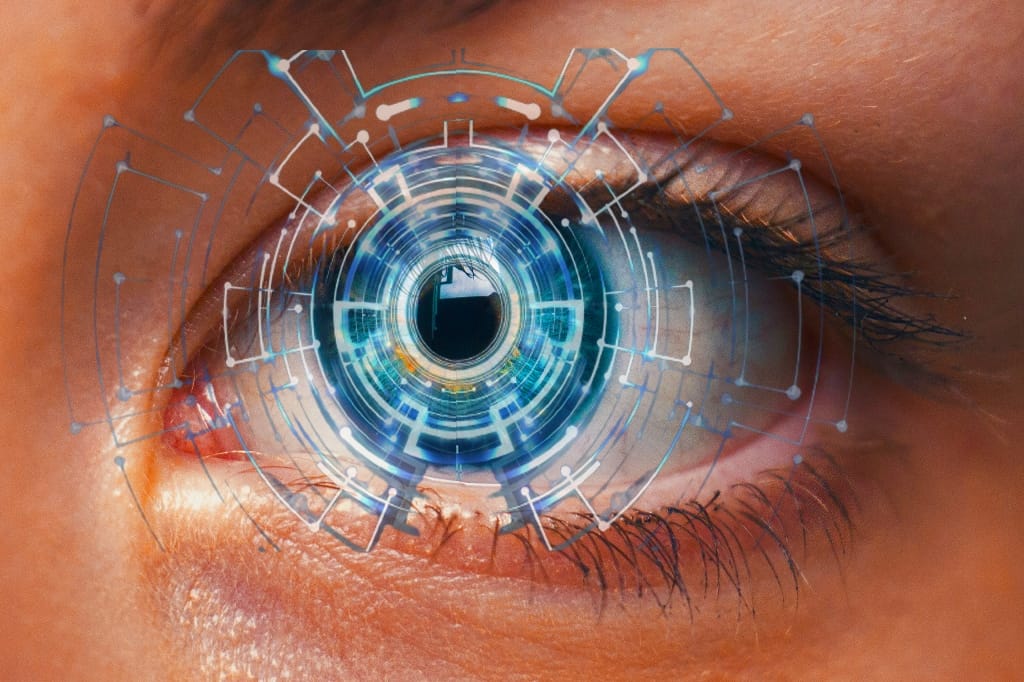Dealing with low vision or sight loss is one of the primary challenges faced by visually disabled people, like navigating around a place, and things recognition, living in isolation, etc. And to deal with these, things like various kinds of canes and electronic mobility aids are used.
In this process, the damaged optic nerves have to bypass to allow signals to get transmitted from the retina to the brain’s vision center. And to make it happen, the user has to wear a customer-designed headgear with an installed camera and wireless transmitter.
A set of 9-millimeter tiles gets implanted in the brain that receives the signals from the receiver mentioned above. Creating a visual pattern from combinations of up to 172 spots of light (phosphenes) enables an individual to navigate and recognize the atmosphere around them.
The Monash University Came up with an Innovation
Gennari, the brainchild of Monash Vision Group (MVG), is a collaboration between Monash University, Alfred Health, MiniFAB, and Grey Innovation.
The Gennari’s bionic vision system got designed to bypass optic nerve damage, making it possible to treat many conditions for which other technologies have limited benefits.
MVG is getting support through cornerstone donations from Marc & Eva Besen and The Alan and Elizabeth Finkel Foundation, plus funding from the Monash Faculty of Engineering and IT Foundation.
Researchers have observed very successful results in sheep with minimal side effects, where it got safely implanted into their brains. It is considered the world’s first long-term test of a fully implantable cortical vision prosthesis.
What Is a Bionic Eye?
A bionic eye is an artificial eye that transmits visual sensations to the brain. It consists of electronic systems having image sensors, microprocessors, receivers, radio transmitters, and retinal chips.
The Progress So Far in Research for Developing a Bionic Vision System
The Monash Vision Group has previously earned funding from the Australian government’s Medical Research Future Fund. And the other capital sources would also get used in the local manufacturing of the bionic vision system.
The team is now looking to build on these promising preclinical results with the first human clinical trials and has already gained the necessary approvals.
Other Organizations Involved in the Research for Bionic Eye
A few other organizations involved in the Bionic eye project are:
Pixium Vision – This French company recently announced the first human implants of its Prima System. The clinical trial is working specifically with patients with dry age-related macular degeneration.
Second Sight – This US-based has also implanted its first retinal prosthesis, the Argus II, in 2007. Designed to restore visual perception to patients with retinitis pigmentosa, it got used by 350 people globally. The company is currently working on cortical stimulation technology similar to the Monash team. As per the latest update, ‘Gennari’ is currently being prepared for a world-first human clinical trial in Melbourne, Australia.
How Does the Bionic Vision Technology Work?

The Monash team’s system comprises custom-designed headgear that holds a camera and wireless transmitter, a vision processor unit and software, and a tileset (9x9mm) for implanting into the brain.
The video camera captures the surrounding scene, which gets sent to the vision processor, where it is processed to extract the most relevant information. This data is then wirelessly transmitted to the circuitry within each of the 9x9mm implanted tiles, which converts the data into a pattern of electrical pulses, stimulating the brain via hair-thin microelectrodes.
‘Gennaris’ creates a visual pattern from combinations of up to 172 spots of light (phosphenes) and should allow individuals to navigate indoor and outdoor environments and recognize the people present and objects around them.
Technology Used in Bionic Eye
The bionic vision system consists of a camera attached to a pair of glasses, which transmits high-frequency radio signals to a microchip implanted in the retina.
Electrodes on the implanted chip convert these signals into electrical impulses to stimulate cells in the retina that connect to the optic nerve.

Who Can Opt Bionic Eye Implant?
Until now, only people with degenerative retinal diseases have been eligible to receive a bionic eye. Three retinal bionic eyes got approval for commercial sale: the Argus II developed in the USA, the Alpha-AMS in Germany, and the IRIS V2 in France.
To determine the same, one needs to call Second Sight at (800) 296-6605 for more information. And based on their shared information, a screening visit with surgeons at the New England Eye Center will get scheduled.
This procedure has got approved for patients with severe to profound retinitis pigmentosa and who meet specific criteria:
- The age group – Adults ages 25 and older
- Bare or no light perception in both eyes
- Previous history of useful form vision
- Visual impairment conditions – Aphakic or pseudophakic
- Willing and able to receive the recommended post-implant clinical follow-up, device fitting, and visual rehabilitation
Limitations of Using a Bionic Eye
A few limitations the implantation of the bionic eye has been following:
- Expensive treatment – It is an expensive treatment, not affordable for everyone.
- Research is still on – Research is still going on results that are not 100% successful.
- The infrastructure development for the treatment is yet to be available in many countries – Every country does not have access to this advanced technology.
- Some element of risk is still there – Creating an artificial replacement may be risk-laden.
Challenges for Researchers in Developing Bionic Vision

The major challenge for researchers is the complex structure of the retina. The presence of a large variety of cells is responsible for particular visual information, all of which respond differently to visual input.
How Much Does a Bionic Eye Cost?
To date, only three types of bionic eyes are available for sale. A device called the Argus II retinal bionic eye is one of them and costs around $150,000.
Past Innovations Which Came True for Bionic Vision System
Fields like medical science, neuroscience, and other technology are doing wonders altogether in bringing innovations and healing hands to humans. Major innovations like the bionic eye, health monitors, and genomics advancement were a dream for many researchers and are now getting conducted by many experts to help address physical and mental challenges in the human body. And in this regard, Bionic Eye is a futuristic step by Monash University and other medical research institutes.










